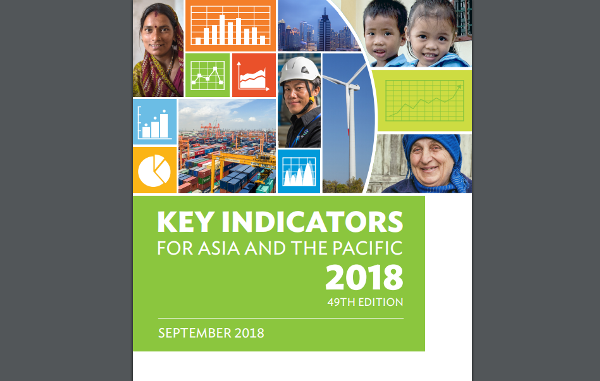Asia and the Pacific counts for a growing share of global gross domestic product (GDP), while the region continues to make progress to reach the Sustainable Development Goals (SDGs), according to a new report by the Asian Development Bank (ADB).
The report, Key Indicators for Asia and the Pacific 2018, said the region accounted for 42.6% of global GDP at purchasing power parity in 2017, up from 30.1% in 2000. Around 780 million people from the region moved out of extreme poverty from 2002 to 2013.
The paper also noted how the labor force is steadily shifting away from agriculture towards employment in industry and services. Gains have also been made towards achieving gender parity in a number of important areas, including education and employment, alongside improvements in outcomes for women’s health issues. Quality of life, as indicated by the Human Development Index, continues to improve.
At the same time, the region’s economies continue to strengthen, broaden, and diversity their participation in trade and global value chains.
The economies of Asia and the Pacific saw a return to robust export growth in 2017, reflecting the recovery of global output and investment, and the region now contributes more than a third of the world’s exports.
“Statistics clearly show that Asia and the Pacific continues to make solid progress in reducing poverty, improving its social and physical infrastructure, and increasing its participation in global production networks,” said ADB chief economist Yasuyuki Sawada.
“However, the region’s development agenda is still unfinished and better data is crucial for helping policymakers identify priority areas and implement successful interventions.”
The SDG indicators presented show that poverty and its associated issues need to be addressed as a priority, said ADB. The indicators highlight the need to improve access to, and quality of, education and health services; expand access to affordable and clean energy sources and safe water and sanitation facilities; and ensure more sustainable patterns of production and consumption. They also emphasize the need to tackle climate change and maintain the growth momentum required to achieve the SDGs.
Key Indicators for Asia and the Pacific 2018, the 49th edition in an annual series, provides statistics on a comprehensive set of economic, financial, social, and environmental indicators for the 48 regional members of the ADB. Importantly, it also covers statistical indicators for the SDGs.
The 17 SDGs to be achieved by 2030, along with their 232 related indicators, provide a global policy framework towards ending all forms of poverty, fighting inequality, and tackling climate change, while ensuring that no person is left behind as economies of the world grow and prosper.
Photo courtesy of ADB









